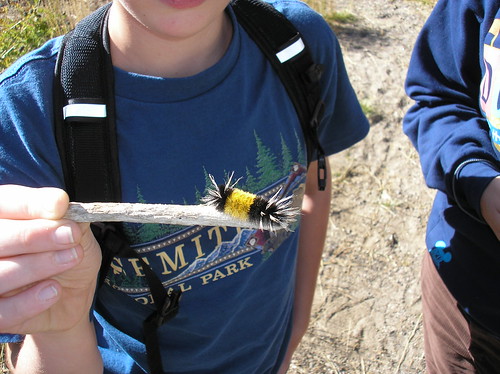
Yesterday the honeybees were still buzzing in the lavender in the front flower bed. I was wandering around looking for some insects and this worker bee let me take few photos while he did his gathering. This shows the eyes really well.

Here is a "behind" photo of the honeybee as he worked. I love the wings texture in this photo and I love to look at his legs...he is well equipped for his work isn't he? Check out the few little ants in the lavender blossom. I didn't notice them until I loaded the photos onto the computer. Amazing what life there is all around us that we don't notice until we focus.
From the Handbook of Nature Study page 394:
“In a colony of honeybees there are three different forms of bees, the queens, the drones, and the workers. All of these have their own special work to do for the community.”
All three bees appear differently and all three have different jobs. The bee we saw in our garden is the worker bee who does the actual gathering of the pollen.
Page 394 of the Handbook of Nature Study lists eight suggestions for observing the worker bee. I think it would be better to study a dead bee than to try to see all the intricate parts on the bee while it is working. The book suggests that in this case we should endeavor to find dead bees to look at with the hand lens or under the microscope at a low power.
From page 394:
“Although ordinarily we do not advocate the study of dead specimens, yet common sense surely has its place in nature study; and in the case of the honeybee, a closer study of the form of the insect than the living bee might see fit to permit is desirable.”
She says this sort of study is suitable for eighth grade work and not below that age. I do have an acquaintance that has an aviary and I am going to ask him if he can provide us with a few bees to look at in our casual study of insects. We may even be able to talk him into giving us a field trip opportunity to his house to see his hives in action.
Barb
Harmony Art Mom




















